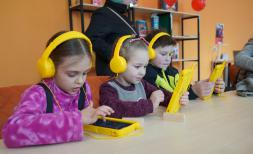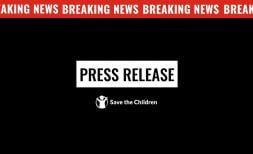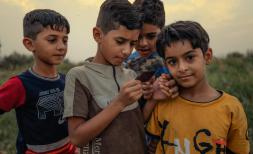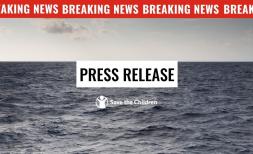Number of children displaced across sub-Saharan Africa by climate shocks doubled to a record high in 2022
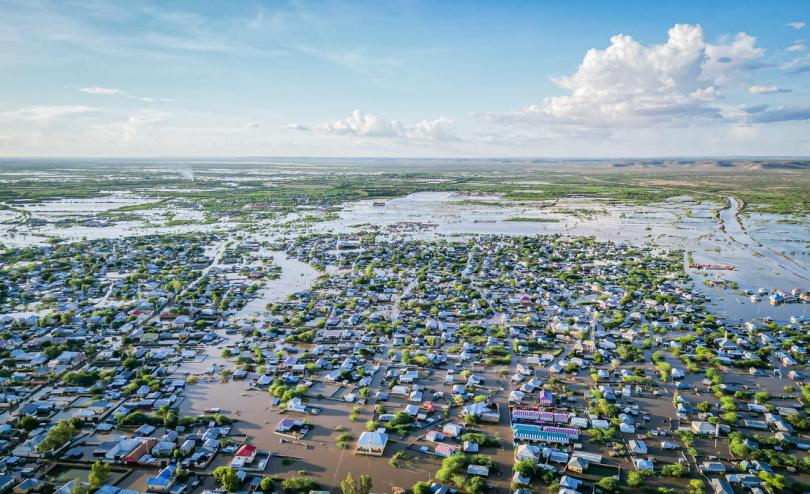
- The United Nations Africa Climate Week kicks off today in Nairobi with policymakers, practitioners, businesses and civil society meeting to discuss climate solutions ahead of the UN’s Climate Change Conference (COP28)
- Save the Children staff and children supported by the organisation are attending Africa Climate Week and are available to speak to media.
NAIROBI, 4 September – The total number of children in sub-Saharan Africa displaced within their home countries by climate-induced disasters nearly doubled last year, said Save the Children, as policy makers meet today in Nairobi to discuss solutions to the climate crisis.
Based on analysis of data from the Internal Displacement Monitoring Centre, at least 1.85 million children in sub-Saharan Africa were left displaced within their countries by climate shocks at the end of 2022, compared to one million children left displaced by similar crises in 2021. Some of these children were displaced multiple times, while others only once, but all remained displaced from home at the end of the year, living in camps, with extended family, or other temporary arrangements.
Flooding in Borno state and across other parts of Nigeria led to the country having sub-Saharan Africa’s highest number of new internal displacements due to climate disasters in 2022, with 2.4 million displacements. By the end of the year at least 854,000 people remained displaced by these shocks, including an estimated 427,000 children.
Meanwhile in Somalia, five failed rainy seasons forced about 6.6 million people - or 39% of the population- into critical levels of hunger, and led to the second highest number of internally displacements at 1.1 million people.
The number of new internal displacements throughout the year across sub-Saharan Africa in 2022 due to such disasters was also three times higher than the previous year, with 7.4 million new internal displacements during 2022 compared to 2.6 million in 2021. This figure includes counts the times people were displaced – sometimes multiples times for one individual – even if they were able to return home by the end of the year.
This is the highest annual number of new displacements from climate disasters ever reported for the region, as the impacts of consecutive climate shocks have begun to sink in and both the resilience of the land and the coping mechanisms of communities become exhausted.
These figures lay bare the stark reality that the rights of children across the region are being eroded at an alarming rate by the impacts of the climate crisis, said Save the Children. Meanwhile, countries on the continent have contributed the least to the crisis, with the smallest share of global greenhouse gas emissions of all the world’s regions.
With the El Niño weather pattern taking hold, causing even more extreme weather events and pushing up global temperatures further, it is likely this figure is only increasing further this year, said the child rights agency.
Falmata*, 13, is from Borno state, northeast Nigeria, where flooding last year forced over 30,000 people from their homes. She remembers: “On this fateful Friday I was returning from school and I kept hearing "rain is coming, rain is coming”. They gave us sacks to fill up with sand and place them in strategic corners. Suddenly I saw a big wave of water coming with speed towards our houses, everyone was in commotion, and my mum said we should pack our belongings and start running, we tried but we could barely pack enough. We ran to a school close to the house and took shelter with other community members affected by the flood. Our houses were submerged.
“Life has been hard, we got separated from family members and have not heard from them since. We found a small room that has sheltered us but the structure is bad, as it has been spoilt by the rain, the ceilings are leaking, and some parts of the room are open. When I see the clouds, I am scared and it brings back memories of the flood that happened before.”
13-year-old Maryam* and her family are currently living in an IDP camp in Baidoa after fleeing clashes and severe drought in southern Somalia. She said: “We had a small farm which was enough for our family and we have various crops on our farm, but we were forced to leave our farm because of the drought and conflicts. Now it is difficult for us to get enough food for our family and we don’t have other sources of income. My father is disabled and cannot work.
“We were told by our parents to leave the village and seek a better life elsewhere.It took us three days to get to a refugee camp in Baidoa.”
Vishna Shah, Director of Advocacy, Communications, Campaigns and Media for Save the Children’s West and Central Africa Regional Office, said: “Falmata*’s experience with the floods last year is sadly all too common. In Nigeria and across the region, many children are, like, Falmata, terrified. They cling onto survival from one extreme weather event to the next, unsure whether unseasonable rains are a blessing for failing crops or whether they will wash away their homes.
“I am looking forward to seeing children voice their experiences and concerns to leaders at the Africa Climate Summit this week. Children have done nothing to cause this crisis – and they need the international community to deliver on climate finance commitments, including adaptation and loss and damage funding, that factor in children’s unique needs.”
Kijala Shako, Head of Advocacy, Communications, Campaigns and Media for Save the Children’s East and Southern Africa Regional Office, said: “When children lose their homes they lose almost everything: their access to healthcare, education, food, and safety. They also lose the building blocks for mental and emotional stability and wellbeing, like a sense of routine, their friends, and the right to play.
“These figures are enough to bring anyone to a standstill and hopefully will spur leaders at Africa Climate Week to wake up to the experiences of children across the region, acknowledge that the climate crisis is having a disastrous impact on their lives, and act urgently to factor in children’s needs and rights into the much-needed response.”
In the Horn of Africa, El Niño is historically associated with above-average rain during the October to December rainy season. As has been evidenced with rains in recent months, rains on the parched ground following almost three years of drought bring further risks of flooding, displacement, food shortages and disease. Meanwhile, the effects of the exceptionally strong El Niño in 2015-2016 caused drought over large parts of southern Africa, which could happen again this time.
According to a report earlier this year by the Children’s Environmental Rights Initiative, Save the Children and partners, just 2.4% of key global climate funds can be classified as supporting child-responsive activities, despite more than a billion children being at extremely high risk of the impacts of the climate crisis.
Save the Children's global climate change programming work includes supporting children and their communities in preventing, preparing for, and recovering from climate disasters and supporting global leaders to protect children in emergencies. Save the Children is also actively monitoring forecasts and potential risks across regions and working with partners to help communities anticipate, prepare for and prevent the worst possible impacts.
ENDS
NOTES TO EDITORS
- Save the Children analysed data by the Internal Displacement Monitoring Centre (IDMC) and the Norwegian Refugee Council. The number of internally displaced people (IDPs) by disasters across sub-Saharan Africa was 2 million in 2021 and 3.7 million in 2022.
- According to the 2022 NRC/IDMC GRID report, in Sub-Saharan Africa, exactly 50% of all IDPs were children, so these figures were halved to find the number of displaced children.
- As well as immediate emergency relief with objects such as soap, detergent, and clothes, Save the Children supported Falmata* and other children who were displaced from the floods in Nigeria with individual child protection case management support. Save the Children is also running a food assistance programme in their communities which the families benefit from. We run a Child Friendly Centre in the communities that children attend in the evening.
* Name has been changed to protect anonymity
- Delfhin Mugo in Nairobi delfhin.mugo@savethechildren.org
- Emily Wight in London Emily.Wight@savethechildren.org ;
For out of hours media requests please email media@savethechildren.org.uk or +44 (0) 7831 650409
